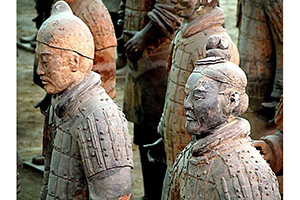
The First Emperor’s tomb complex, with its auxiliary pits filled with thousands of life-size terracotta figures, has been hailed as the Eighth Wonder of the World. Other than the massive scale of the underground formation, what is it that we should really wonder about? Mysteries abound. Why do these figures wear strange slanting hairdo rarely seen at the time? Why does the terracotta army and the emperor’s “spirit carriages” face opposite directions? Moreover, overwhelming evidence suggests early Chinese distrust of the perishable body as the imaginary afterlife medium of existence. If the body is unreliable, how was afterlife imagined? Was the tomb complex really about the preservation of the emperor’s corpse? Was the terracotta army there to defend the First Emperor’s tomb?
Eugene Y. Wang is the Abby Aldrich Rockefeller Professor of Asian Art at Harvard University. A recipient of the Guggenheim Fellowship and other awards, he is the art history editor of the Encyclopedia of Buddhism (2004). His book, Shaping the Lotus Sutra: Buddhist Visual Culture in Medieval China (2005), garnered the Academic Achievement Award from Japan in 2006. He has served on the editorial board of the Art Bulletin, and the advisory board of Center for Advanced Study in Visual Arts, National Gallery of Art, Washingtong, D.C. His extensive publication covers all periods and aspects of Chinese art history. His current research interests include the exploration of artful mind and its materialization, art and artificial systems. He is currently completing a book on the early Chinese vital art evidenced in the First Emperor’s mausoleum complex and the terracotta army. He is also the founder and director of Harvard CAM Lab(Chinese Art Media Lab) https://www.harvardcamlab.com/, a R & D platform and group dedicated to the design and multimedia production of works related to Chinese art.
Originally published at asia.nd.edu.